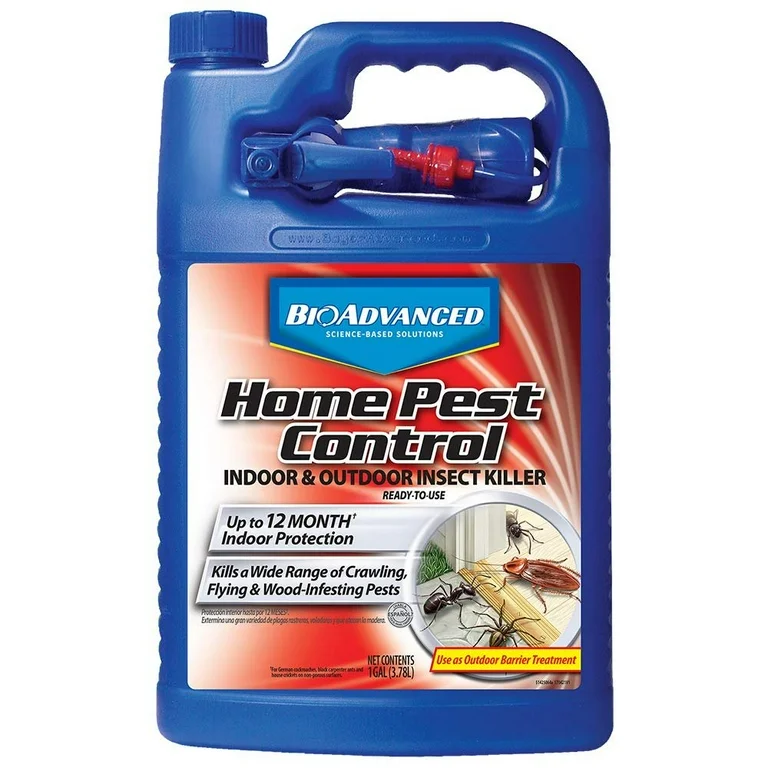Reliable A1 Bed Bug Treatment in Charlotte - Safe and Proven Techniques
Reliable A1 Bed Bug Treatment in Charlotte - Safe and Proven Techniques
Blog Article
Bed Insect Treatment Breakdown: Contrasting Chemical Vs. Non-Chemical Solutions
In the world of pest control, especially when dealing with the persistent problem of bed bugs, the selection in between chemical and non-chemical therapy options can be a crucial one. Both techniques offer distinct advantages and drawbacks, influencing elements such as performance, security factors to consider, and total expense. By taking a look at the nuanced details of each method, a clearer understanding of which course to seek in dealing with a bed bug problem can be attained.
Effectiveness of Chemical Treatments
Chemical therapies for bed insect infestations have been extensively recognized for their powerful and fast effectiveness in eradicating these parasites. When considering the efficiency of chemical treatments, it is crucial to understand that they can give a detailed and quick option to a bed pest trouble.
Moreover, chemical therapies have the advantage of offering recurring results, implying that they can continue to eliminate bed pests even after the initial application. This residual activity is especially useful in combating any type of possible re-infestations. In addition, the quick activity of chemical treatments can bring alleviation to individuals encountering extreme bed bug invasions, enabling them to regain control of their living rooms swiftly.
Security Worry About Chemical Solutions
One vital facet that requires mindful consideration when utilizing chemical options for bed pest therapy is guaranteeing the security of owners and the atmosphere. While chemical treatments can be reliable in removing bed pests, they might present risks if not dealt with appropriately. Among the primary safety and security interest in chemical solutions is the possible injury they can create to human wellness. Direct exposure to specific chemicals used in bed insect therapies can result in respiratory system concerns, skin irritability, or other unfavorable reactions, especially in people with pre-existing problems or level of sensitivities. Furthermore, incorrect application or dose of chemical pesticides can lead to poisonous deposits sticking around in the cured location, posing long-lasting health dangers to owners.
In addition, the ecological effect of chemical solutions is an additional significant factor to consider. Some pesticides utilized in bed pest treatments might be unsafe to useful pests, wild animals, and communities if they seep right into the soil or water supply. It is necessary to use chemical treatments carefully, adhering to safety standards, and considering much less poisonous alternatives to minimize these dangers and ensure the efficient and secure administration of bed pest infestations.
Benefits of Non-Chemical Approaches
Taking into consideration the potential security problems and ecological effect associated with chemical remedies for bed pest therapy, exploring non-chemical methods offers an internet encouraging choice with numerous distinct advantages. Non-chemical therapies are ecologically friendly, as they do not contribute to air or water air pollution, making them a lasting option for pest control.
Furthermore, non-chemical remedies can be efficient in targeting bed insects, consisting of hard-to-reach areas where chemical therapies may not pass through. Approaches such as heat therapy, vacuuming, vapor cleaning, and mattress encasements supply thorough elimination without the see post usage of harmful chemicals. Moreover, non-chemical techniques can be less turbulent, needing minimal preparation and enabling quicker reentry right into treated areas. In general, going with non-chemical bed pest treatment methods not only focuses on safety and environmental management but likewise guarantees comprehensive and efficient insect control.
Limitations of Non-Chemical Treatments

In addition, non-chemical therapies commonly need several applications to accomplish successful eradication. This can be taxing and may not always guarantee total elimination of all bed pests and their eggs, especially in hard-to-reach or covert places.
Moreover, the success of non-chemical treatments heavily counts on proper execution and thoroughness, which can be challenging for people without professional knowledge. Inadequate application of non-chemical methods may result in incomplete removal, resulting in relentless invasions and the requirement for additional therapies.
Consequently, while non-chemical therapies have their advantages, it is vital to acknowledge these restrictions and consider them when establishing one of look at more info the most reliable approach for handling bed insect invasions.
Expense Comparison: Chemical Vs. Non-Chemical Options
Offered the limitations linked with non-chemical treatments, a vital facet to assess in the context of bed bug monitoring is the price contrast between chemical and non-chemical alternatives. In contrast, non-chemical treatments like warm treatment or heavy steam can be more expensive, with expenses varying from $1,000 to $6,000 for a whole home. While the initial price of chemical therapies may seem reduced, several therapies might be needed to completely get rid of the invasion, possibly enhancing the overall expense.
Conclusion

Taking into consideration the potential safety problems and ecological effect linked with chemical services for bed pest treatment, checking out non-chemical methods presents an appealing alternative with a number of distinctive benefits.Given the constraints linked with non-chemical therapies, a necessary aspect to review in the context of bed pest administration is the cost comparison between chemical and non-chemical options. In contrast, non-chemical therapies like heat treatment or vapor can be more pricey, with prices varying from $1,000 to $6,000 for an entire home. While the preliminary cost of chemical therapies may appear lower, numerous treatments may be required to fully get rid of the infestation, potentially boosting the general price.In conclusion, when contrasting chemical and non-chemical bed bug therapy alternatives, it is essential to take into consideration performance, security, benefits, restrictions, and price.
Report this page